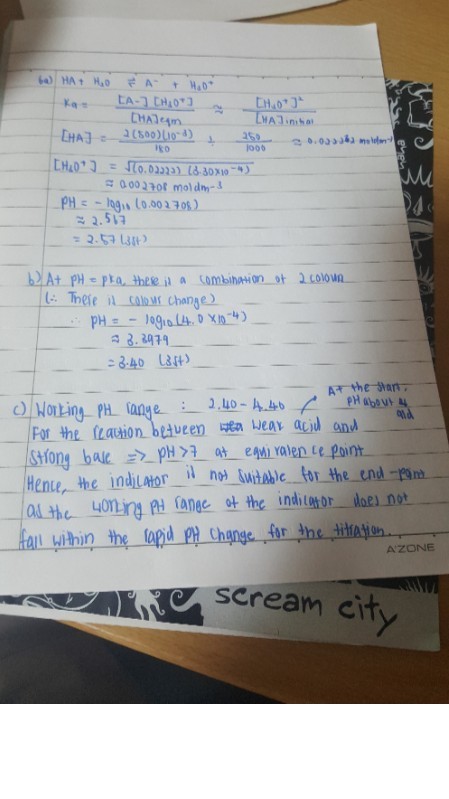Tan Yan Pei's answer to Angelica's Junior College 1 Chemistry question.
done
{{ upvoteCount }} Upvotes
clear
{{ downvoteCount * -1 }} Downvotes
For part b, I assumed that the 'it ' was referring to the indicator(they are weak acids). For part c,you just need to remember that the working pH range of an indicator is pH +/- 1 and for it to be suitable,it must fall within the rapid pH change of the titration.In this case, the indicator will change colour before neutralisation is complete and hence cannot determine the endpoint.Hope it helps!
Date Posted:
7 years ago
Thanks btw can I ask why I can't use -lgka for part a but we can use it for part b?
You can only use pH=pKa only when there is an equal concentration of HA and A-. For Kb, it will be pOH=pKb when there is an equal concentration of BH+ and B(given that base is B).This are derived from the Ka and Kb equations.
We usually use these for buffer solutions of maximum buffering capacity. Just that in the case of indicators,the acid is one colour and its conjugate base is another colour.When there is an equal concentration,there is a mixture of both colours,saying that there is a colour change there that's why pH=pKa is used here.
We usually use these for buffer solutions of maximum buffering capacity. Just that in the case of indicators,the acid is one colour and its conjugate base is another colour.When there is an equal concentration,there is a mixture of both colours,saying that there is a colour change there that's why pH=pKa is used here.



